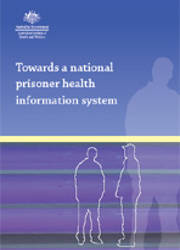Summary
The large and growing population of prisoners in Australia presents a strong challenge to public health. Occasional studies make it clear that many prisoners have poor health and this affects the health of the wider public as prisoners move into and out of the general community.
Many prisoners come from disadvantaged backgrounds and Indigenous Australians are strongly over-represented. As part of their generally worse health, prisoners have much higher levels than the rest of the community of hepatitis C and other communicable diseases, a range of mental health disorders, substance abuse of both illicit and licit drugs, and a range of chronic diseases.
Studies show that prison health programs can make a difference. They offer a vital chance to act to improve prisoner health and, in turn, the health of the community. These programs require good information to help identify areas for improvement, support service policy and planning, evaluate services, and track progress over time.
Australia has long recognised the benefits of a sound evidence base for the wider public and for a range of special groups. Yet prisoners are a notable omission—there is no national health monitoring of prisoners even though they are recognised as a high-risk group. Present information remains sporadic, inconsistent and incomplete, and provides a limited picture of prisoner health and their health care. This also means that Australia does not have a complete picture of the public’s health.
This report outlines the need for a national prisoner health information system. It responds to concerns expressed about prisoner health in recent times by the Australian Health Ministers’ Advisory Council (AHMAC), and it follows initiatives by organisations with an interest in the area, such as the Centre for Health Research in Criminal Justice (CHRCJ).
The report describes prisoners and what is known about their health. It points out that there is an opportunity to intervene and treat prisoners while in prison, leading to their better health, and also reduce risks to the community on their release. It states what prisoner health information we currently have, where the gaps are, and what further information is needed. It concludes by calling for a national system of data collection, and specifically:
- completion of an audit of prisoner health information that is currently being collected
- regular reporting of national prisoner health indicator data
- definition of a national minimum data set for prisoner health
- standardisation of key data items and definitions across jurisdictions
- development of a regular national prisoner health survey, or consistent state surveys
- a (virtual) centre or clearinghouse for prisoner health information.



